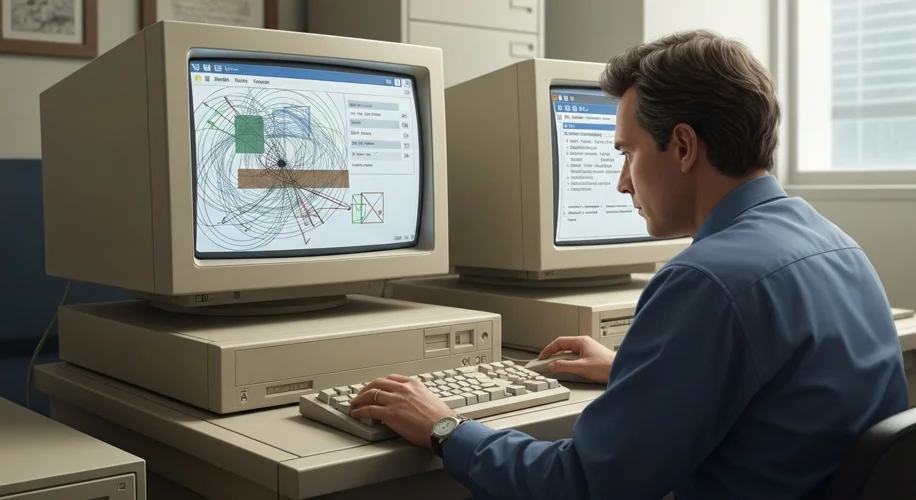In the hushed corridors of the Cold War, a silent revolution was brewing, not with the clatter of weapons, but with the hum of computers. It began in the late 1960s, a time when the world was gripped by the fear of nuclear annihilation and the space race was in full swing. Amidst this tension, a visionary project emerged from the U.S. Department of Defense: the Advanced Research Projects Agency Network, or ARPANET.
Imagine a world where communication was bound by physical wires and paper mail. The idea of machines talking to each other across vast distances was the stuff of science fiction. But for a group of brilliant minds funded by the U.S. government, this was the future they were determined to build. The driving force behind ARPANET was the need for a robust and decentralized communication system that could withstand a nuclear attack. If one node of the network were destroyed, the others could still function, ensuring vital information could flow.
On October 29, 1969, a momentous event occurred. A student programmer named Charley Kline, at UCLA, attempted to send the first message over ARPANET to a computer at the Stanford Research Institute. The intended message was simple: “LOGIN.” However, the system crashed after only two letters were transmitted, so the first message ever sent was “LO.” It was a humble beginning, a digital stutter that belied the profound impact it would have on human civilization.

ARPANET was not just about military resilience; it was also a collaborative space for researchers. Scientists and academics from universities across the United States began using the network to share data, exchange ideas, and develop new protocols. This early community fostered a spirit of open innovation, laying the groundwork for the internet we know today.
One of the most significant developments was the creation of the Transmission Control Protocol/Internet Protocol (TCP/IP) suite in the 1970s, spearheaded by Vint Cerf and Bob Kahn. TCP/IP provided a standardized way for different computer networks to communicate with each other, effectively creating an “internetwork” – the foundation of the modern internet.
As the network grew, so did its applications. Email, developed by Ray Tomlinson in 1971 (who also famously chose the ‘@’ symbol to separate user names from host names), quickly became a killer app, revolutionizing interpersonal communication. The early internet was a far cry from the visually rich, user-friendly experience of today. It was largely text-based, accessible only to those with specialized knowledge.
However, the true explosion of the internet into public consciousness came in the late 1980s and early 1990s with the invention of the World Wide Web by Tim Berners-Lee at CERN. Berners-Lee envisioned a system of hyperlinked documents, accessible through a graphical interface. He developed HTML (HyperText Markup Language), URL (Uniform Resource Locator), and HTTP (Hypertext Transfer Protocol), the core technologies that made the Web possible.

In 1993, the release of the Mosaic web browser, developed at the National Center for Supercomputing Applications (NCSA), made the World Wide Web accessible to a broader audience. Mosaic was intuitive, displayed images inline with text, and was available for multiple operating systems, sparking a frenzy of online activity.
The impact of this evolution was seismic. The internet transformed commerce, education, entertainment, and social interaction. It democratized information, empowered individuals, and created entirely new industries. From ARPANET’s rudimentary “LO” to the ubiquitous connectivity of today, the journey has been nothing short of extraordinary.

The story of the internet is a testament to human ingenuity, collaboration, and the relentless pursuit of connection. It’s a narrative that continues to unfold, shaping our future in ways we are only beginning to comprehend.

